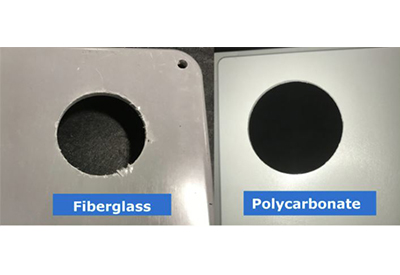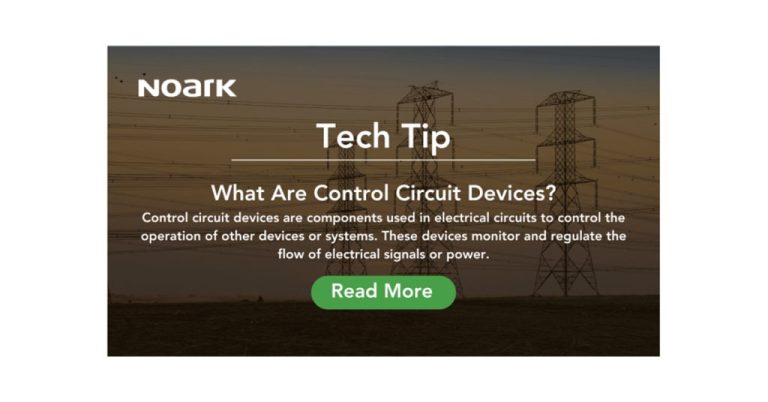Fibox: Battle of the Boxes – Fiberglass vs Polycarbonate Enclosures

February 16, 2021
by Carl Marchese
The Battle of the Boxes
If you are reading this, you are probably wondering “Should I use a polycarbonate enclosure or a fiberglass enclosure?” This is a very valid question to have.
Often we find companies continue to use fiberglass because they are unaware of the advantages of working with polycarbonate; and, the inherent value in using this versatile thermal set plastic.
When it comes to the NEMA ratings, a 4X enclosure is a 4X enclosure when it leaves the factory, regardless of the material. How well the enclosure performs during its service life, will determine your return on investment.
Today polycarbonate is one of the most versatile types of plastic used in industrial applications throughout the world.
Impact Resistance
Polycarbonate can withstand an impact of over 900 psi; fiberglass comparatively can only withstand about 225 psi. As a thermal set plastic, polycarbonate will flex and return to its original shape, while fiberglass can shatter with on impact.
Winner: Polycarbonate
UV Resistance
When exposed to UV light for prolonged periods of time, the color of fiberglass material will fade. This process is called as photodegradation or more commonly known as “sun bleaching’ or “bleaching.”
Photodegradation occurs when ultraviolet rays break down the chemical bonds of the dyes in an object and the colors fade.
More importantly, however, fiberglass can also delaminate with prolonged UV exposure, this more commonly known as “blooming.” Delamination is when the layers of fiberglass strands and resin separate from each other or from the core sandwiched between the layers, exposing the glass fibers on the surface of the enclosure. It gives the enclosure a rough or fuzzy texture.
Delamination is a common problem and can eventually compromise the overall structural integrity of the enclosure – resulting in a system failure of the internal components. Replacing either the enclosure or the entire unit may be required, costing time and money.
Polycarbonate enclosures are injection molded and do not have layers to delaminate. The polycarbonate used for Fibox’s enclosures is specially formulated with UV inhibitors to withstand prolonged exposure to the sun.
Fibox took part in a UV exposure resistance study. The results showed that although a slight “bleaching effect” may occur over time, the Fibox polycarbonate enclosures became more durable in the field. This result is due to a chemical reaction that the polycarbonate has with the UV rays.
In some cases, Fibox clients have begun upgrading the internal components of their designs with a subsequent generation on-site while continuing to use their original enclosing investment. Recycling the enclosure saves time and money with a longer lasting Fibox enclosure.
Winner: Polycarbonate
Modifications
A stock enclosure dose does not remain stock for long, at some point, an engineer or technician will alter the box with holes, cutouts, and recesses. These changes are necessary to make the enclosures functional. Fiberglass and polycarbonate respond differently to such modifications.
Comprised of layers resin and glass fibers, Fiberglass when cut, drilled, or otherwise modified can splinter like wood, resulting in a rough, chipped edge.
Moreover, the cutting process produces a dust containing glass particles. This dust can irritate the eyes and any exposed skin. Inhaling the dust can impact respiratory function. Handling fiberglass modifications require the user to “suit up” to esure saftey. Conversely, modifieding polycarbonate produces larger specks of material that are too heavy to become airborne. These specks will not irritate the skin and can be easily swept up or vacuumed. Additionally, if a transparent cover is required, this is easily accomplished with a polycarbonate enclosure. Polycarbonate offers many transparent cover options, or can easily install a polycarbonate window.
Winner: Polycarbonate
Weight
Fiberglass outweighs polycarbonate by varying amounts. Fiberglass enclosures have thicker walls than a polycarbonate enclosure. For example, a 16x14x8 polycarbonate enclosure weighs 7.3 pounds. Compare that to a smaller sized, 16x14x6 fiberglass enclosure which weighs 8.9 pounds.
The costs associated with greater weight can go well beyond the initial shipping costs from the supplier’s warehouse until the unit arrives at its final destination. Shipping costs can quickly increase the overall product cost – not to mention the additional strain on human resources when carrying heavier enclosures.
These costs are magnified when working with larger sized boxes. Using a polycarbonate enclosure will save money on shipping and human resources right off the bat.
Winner: Polycarbonate
Cost
Polycarbonate and fiberglass are comparably priced, however, with all the factors stated above fiberglass can cost you and your company more in time and money. These possible cost drivers include shipping, potential redoing modifications and a shorter, less reliable field life.
Winner: Polycarbonate
![]()
https://www.fiboxusa.com/enclosure-resources/battle-of-the-boxes/











